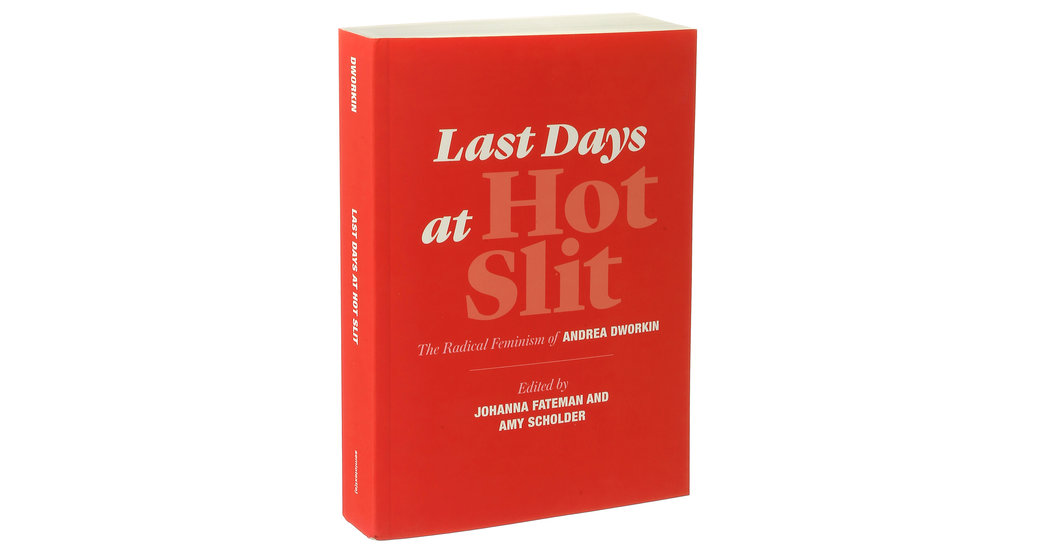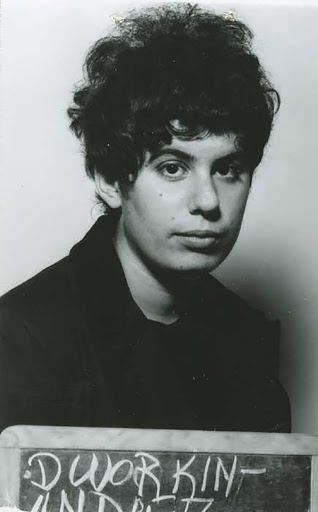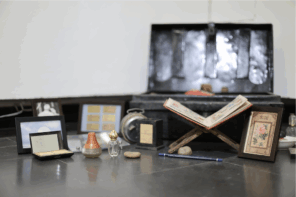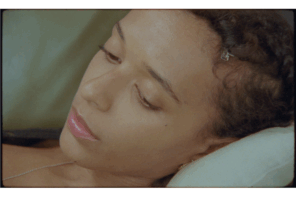When I was an undergraduate in the early 2000s, Andrea Dworkin’s “anti-sex” writing was anathema to the prevailing discourse of feminism. The cultural moment urged us to own our sexuality – maybe even to turn a profit from it. As queer theory ascended in the academy and Sex and the City transformed TV narratives about female desire, seedier entrepreneurs marketed empowerment in more or less cynical ways, from the Girls Gone Wild franchise, to post-Spice Girls promises of “Girl Power” and pole dancing in gyms. Fat, serious, and railing against objectification, Dworkin represented the polar opposite of the third-wave feminist fusion of desire and capitalism. At the time of her death in 2005, I had not read her writing. But I began to read bits and pieces of her work online, intrigued by her untouchability and our overlapping South Jersey background – my father graduated Cherry Hill High School West one year after her. I then purchased an old copy of Woman Hating for a few bucks. Dworkin’s cross-cultural analysis of misogyny held a battle cry for total revolution. Even so, progressive feminists saw her anti-pornography activism as an irredeemable position. And I largely kept quiet about my Dworkin fascination through the Obama presidency.
Last Days at Hot Slit, a new anthology of Dworkin’s writing edited by Johanna Fateman and Amy Scholder, emerges in a very different era. Against the backdrop of alt-right white supremacy, struggles for LGBTQ rights, #BlackLivesMatter, and #MeToo, Dworkin’s plainspoken fury appears timely. From a post-Trump vantage, it’s easy to see Dworkin’s open vulnerability and struggles with critics as foreshadowing Internet call-out culture. What is more astonishing is the enthusiasm for her work among the rarefied realm of the artworld. The launch event for Last Days at Hot Slit, hosted at the Lower East Side gallery Participant Inc in March, commanded a large crowd, representing many intersections. It featured readings by the editors, along with writers and artists CD Clifford, Karen Finley, Andrea Long Chu, Shiv Kotecha, and Viva Ruiz – many of whom are known for sex-positive feminist work. The energy each reader gave to Dworkin’s words was palpable, even if their politics diverged from her party lines.
Today, Dworkin’s blistering anger feels urgent. At 400 pages, Last Days gives an overview of the late feminist’s writing, with special emphasis on her most personal material. It includes excerpts from her early nonfiction titles – Woman Hating (1974), Pornography: Men Possessing Women (1979–89), and Intercourse (1987–95) – in addition to speeches, her under-appreciated fiction, and previously unpublished material. Among my discoveries are letters to her parents and “My Suicide” (1999), an essay found by Dworkin’s partner John Stoltenberg after her death in 2005. Written in the form of a suicide note, the tract is a stark self-examination following her account of being drugged and raped in a Paris hotel. Like other traumas Dworkin endured, her “last rape” becomes grist for a text that reads like a mission statement. “I need to know everything about terror. I need to see every exploitation and trace it on the map with my own fingers,” she writes. With her dark wit, she bemoans her “bad pheromones” that attract “bad men and bad bugs.” She continues with a rhetorical question: “As I once said to a friend, why couldn’t I be an expert on Shakespeare like you? Why am I an expert in debasement and filth?”
Dworkin’s ability to articulate degradation and structural injustice was her genius, but it sometimes lacked nuance. Born in 1946 in Camden, New Jersey to a Jewish family, Dworkin took on questions of sex and violence with unsparing prose that reflects her working-class roots. Reading her, one gets the sense that she was writing to save her own life. Her story as a survivor of sexual and physical abuse is harrowing. When she was nine years old, a stranger molested her in a movie theater. In 1965, while a college freshman at Bennington, she was arrested at a Vietnam War protest in New York City and subjected to a violent pelvic exam at the Women’s House of Detention. Four years later, Dworkin moved to the Netherlands and married a Dutch anarchist. The relationship turned terrifyingly abusive, and Dworkin sustained nearly-fatal beatings from her husband. While extricating herself from her marriage, she befriended feminists like Ricki Abrams. To make ends meet during this time, and in other moments of youthful transition, she worked as a prostitute. It’s no coincidence that her introduction to feminist theory coincided with her stint as a sex worker; she came to see the abolition of pornography and prostitution as essential to women’s liberation.
Dworkin fled the Netherlands in 1972 and returned to Amerika (her preferred spelling throughout her oeuvre). She soon emerged as a militant lesbian feminist with the publication of Woman Hating. Her early draft of the book, initially a collaboration with Abrams, was provisionally called Last Days at Hot Slit. Fateman and Scholder have repurposed this title for their anthology. In the introduction, Fateman, a musician and art critic, recalls discovering Dworkin as a teenager: “She modeled rage as authority; her imperious voice and dirty mouth represented a feminist literature empty of caveats, equivocation or the endless positing of one’s subjective limits.” Dworkin deployed “fuck” with jackhammering frequency and finessed the art of lobbing vulgar one-liners at her detractors. In her own words, she wanted to “write a prose more terrifying than rape, more abject than torture … more filled with threat and aggression than prostitution.”
This aggressive rhetorical strategy alienated her from her more mainstream feminist contemporaries. And she made herself a worthy target for sex-positive feminists. Beginning in the mid 1970s, she lent her support to organizations like Women Against Pornography. In 1983, Dworkin co-wrote the failed Antipornography Civil Rights Ordinance with lawyer Catharine MacKinnon – a proposed law that would give women the right to seek damages against pornographers and porn distributors in civil courts, as opposed to raising obscenity charges. Her most damning move was to align herself with conservative women in order to pass this legislation. In Right Wing Women (1983), she attempts to understand the psychology of the eponymous women, even as they express openly homophobic and anti-Semitic attitudes towards her. The same year, she eviscerated her sex-positive critics, including queer activists, in a text called “Goodbye to All This,” published for the first time in this collection. Still, the editors of this volume argue that the two-decade backlash against her work is a symptom of patriarchal expectations of women; they must be perfect, or they must be silent.
Rather than flawlessness, Fateman asks us to consider Dworkin in terms of greatness. “Greatness is not synonymous with perfection or popularity,” Fateman writes. “Great men are by definition to be reckoned with for the dilemmas they force us to confront, while the ways to castigate a woman of brilliance and ambition are sometimes fatal, whether she’s deemed evil or merely, as they say, problematic.” Dworkin sought a complex greatness, far from the facile nostalgia of “MAGA” enthusiasts. If she were to answer the question of Linda Nochlin’s paradigm-changing essay, “Why Have There Been No Great Women Artists?”, she might have said that they feared what they would lose. Dworkin’s take-no-prisoners feminism had its flaws, but she did not hold back for fear of making enemies.
How, then, do Dworkin’s best-known texts fare decades later? Some ideas feel surprisingly contemporary, while others immediately show their age. In Woman Hating, for instance, Dworkin effects an early appreciation of the role that intersectionality plays in feminist theory. In “The Rape Atrocity and the Boy Next Door,” a speech from 1975 that Dworkin delivered at colleges, she gives a lucid account of rape law’s origin in property law. The reforms she advocates – including the abolishment of corroborative evidence and the outlawing of marital rape – remind readers how much influence militants like Dworkin had, and just how much legal work second-wave feminists accomplished. With US abortion rights under fire – a near-total ban on the procedure having recently passed in Alabama – these political strategies need our renewed attention more than ever. Another central text, Pornography, revels morbidly in grisly depictions and sweeping indictments (if only Dworkin had turned to art criticism!), though it, too, roots its argument in the industry’s structural inequalities. “How does one fight racism and jerk off to it at the same time? The Left cannot have its whores and its politics too,” Dworkin writes.
Intercourse, first published in 1987 at the height of the AIDS crisis, has been her most controversial nonfiction work to date. The customary summary “all intercourse is rape” greatly oversimplifies her analysis. (Dworkin’s actual words: “Without being what the society recognizes as rape, it is what the society – when pushed to admit it – recognizes as dominance.”) In the book’s second-edition preface, from 1995, she urges more nuance than what she sees as “this reductive brave new world” of third-wave feminism, in which “women like sex or we do not.” She argues for more language around intercourse, not less – though in her own brutal voice, she also likens the act to “collaboration.” In a later excerpt, she proposes a more modest vision of “intercourse being one sex act among many entered into by (hypothetical) equals as part of other, deeper, longer, perhaps more sensual lovemaking.” Can we reconcile her more inflammatory edicts with this suggestion? Would her vision seem so incorrigible?
One of the most baffling aspects of Dworkin’s reception was how, as she describes, her books “were dismissed by patriarchy’s intellectual ruling class as Victorian or puritanical – empirical synonyms for ignorant.” Her writing, though full of venom, is rooted in personal experience. Dworkin writes in Intercourse, “Am I saying I know more than men about fucking? Yes, I am. Not just different: more and better, deeper and wider, the way anyone used knows the user.”
In the past 18 months, global conversations about sexual assault and rape culture have spread to questions of artistic representation. Dworkin, it seems, finally hooked her high-art audience. Fateman herself threw down the gauntlet in a 2018 Artforum article: “Rape should be a trope, an art-historical subject belonging to the people fallen men have traditionally fucked over.” The exhibition The Un-heroic Act: Representations of Rape in Contemporary U.S. Women’s Art (which I reviewed in the same publication) was one answer to her call. The show has had a vibrant afterlife on the lecture circuit to expand intersectional conversations about rape. Countless other exhibitions and artists have approached the topic in their work – in ways that expand the conversation beyond a cisgendered, heteronormative framing.
Yet as a movement, #MeToo has had limited reckoning in the artworld – despite, as artist Coco Fusco detailed, its marked potential for abuse. Perhaps this is due to the informal, social nature of artworld agreements, or a consequence of art’s proximity to patriarchal power. Dworkin does not have all the answers. She did not write about contemporary art, and her arguments about pornography suggest she would have hated the contemporary moment’s reclaiming of violent representations. What she does offer is an unabashed, clear-sighted narrative of patriarchal bias, and an unrelenting call for resistance; how painful that the urgency of this position is so reliably renewed.




























There was a reason why the majority of young feminists disowned Dworkin. Likely this younger generation will discover it.
I knew Ricki Abrams when she was living in Amsterdam during December 1972 and January 1973. We flew to Heathrow together, in January. She on her way to Slacks Creak in Queensland, I back to the countryside of Virginia. If you should read this comment Ricki, you can find me on facebook under the name Jimi Olson.